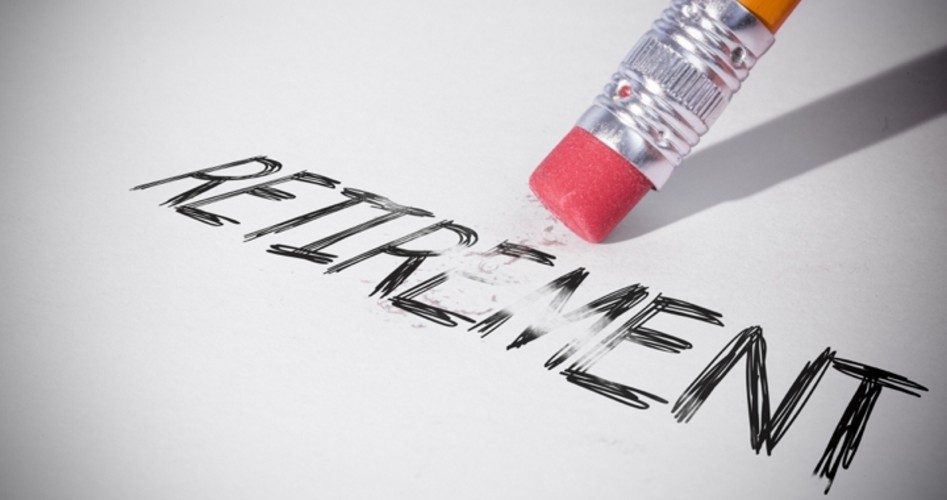
The Central States Teamsters pension plan, covering more than 400,000 participants, expects to receive permission shortly from the Treasury Department to cut benefits to those participants, possibly by as much as 30 percent. At the end of 2014 the plan had $35 billion in liabilities (future promises to participants as they retire) compared to less than $18 billion on hand to pay them.
Right behind Central States was the New York State Teamsters Conference Pension and Retirement Fund, which is also in trouble. Owing nearly $3 billion to its 35,000 plan participants, it has less than $1.3 billion to meet this obligation. Its plan, in its request to the Treasury Department, spelled out just how great the cuts would be: All active participants would see their monthly retirement benefits cut immediately by 20 percent, while those already retired and drawing a monthly check would see their benefits cut by nearly a third: 31 percent.
This galvanized one member who will be affected, Mark Greene, a UPS employee for 28 years who drives a rig out of Kingston, New York, to ask, “Was [this] the result of natural causes, or was it self-inflicted?” He raised some money from other employees and hired Edward Siedle, a former Securities and Exchange enforcement lawyer whose company investigates trustees’ performance, to take a look. His conclusion made it into the New York Times:
Mr. Siedle did not gain access to all the fund documents [he] needed to do an exhaustive review. But the materials he had showed that opacity, expenses and illiquidity among the pension fund’s investments had risen significantly as its financial condition worsened.
He estimated that the fund incurred $400 million in avoidable losses … and over $500 million in excessive expenses.
Opacity: the lack of transparency. Expenses: costs incurred to purchase and manage those opaque investments. Illiquidity: the inability to get out of those opaque investments if they turn sour.
This is what happens when naïve, inexperienced trustees, faced with a plan that is in slow-motion free-fall, do: They ask Wall Street “professionals” to offer their suggestions on how to shore up the plan’s failing performance. Those “professionals” are salesmen of the first order, able to dazzle, befuddle, and persuade the innocents seeking a way out, selling them the benefits: high returns in exotic investments that only they know how to manage. For their expertise they get paid exorbitant management fees.
The plan trustees moved 40 percent of the plan’s assets from equities (stocks) and bonds into these “opaque, expensive and illiquid” opportunities, and are now enjoying the experience as the plan accelerates into insolvency.
When Kenneth Stilwell, the plan’s executive administrator, got wind of Seidle’s conclusions, he mightily disputed them, calling them “grossly inaccurate” and “completely unreliable.” The plan’s performance, the trustees said, was impacted negatively by stock market declines of 37 percent following the dot.com bust in 2000, and another 37 percent decline during the Great Recession in 2008. It is also suffering from declining union membership, which is failing to bring enough new revenues to keep the plan afloat.
Digging deeper, one finds that the federal government’s Pension Benefit Guarantee Corporation (PBGC) is itself in danger of going broke. Set up in 1974 to “encourage the continuation and maintenance of voluntary private defined benefit pension plans [and] provide timely and uninterrupted payment of pension benefits,” the plan uses the ultimate backstop to provide those guarantees: the U.S. taxpayer.
In the fiscal year 2015, PBGC paid out nearly $6 billion in benefits to participants of failed pension plans, increasing the agency’s deficit to $76 billion. The PBGC now has $164 billion in obligations and just $88 billion in assets.
When this was reported to Congress, it passed the Kline-Miller Multiemployer Pension Reform Act of 2014, allowing plans such as the Teamsters’ to ask permission to cut benefits to its plan participants. Prior to 2014 those plans weren’t allowed to do so. But actuaries looking into the PBGC reported that unless something was done, the PBFC itself would be broke in less than a decade.
The door is now open for other pension plans facing similar shortfalls to apply for permission to cut benefits to their participants. The ripple effect could be enormous: PBGC is the ultimate backstop for some 22,000 single-employer pension plans and another 1,400 multi-employer pension plans covering 40 million participants. The agency itself has estimated that as many as 15 percent of those plans could become insolvent over the next 20 years. Already deeply under water, the situation at the PBGC will only get worse, raising the spectre of a taxpayer bailout reminiscent of the banks’ bailouts in 2008.
It’s the taxpayer, always the taxpayer, inevitably and forever the taxpayer who backs up these promises when they can’t be kept.
Correction: The opening paragraph of this article is incorrect. The Central States Teamsters pension plan originally applied for permission to enact cuts in May 2016 but the request was denied. Following the denial the plan trustees announced that it would not pursue a second application for cuts. The New American regrets the error.
An Ivy League graduate and former investment advisor, Bob is a regular contributor to The New American magazine and blogs frequently at LightFromTheRight.com, primarily on economics and politics. He can be reached at [email protected].


